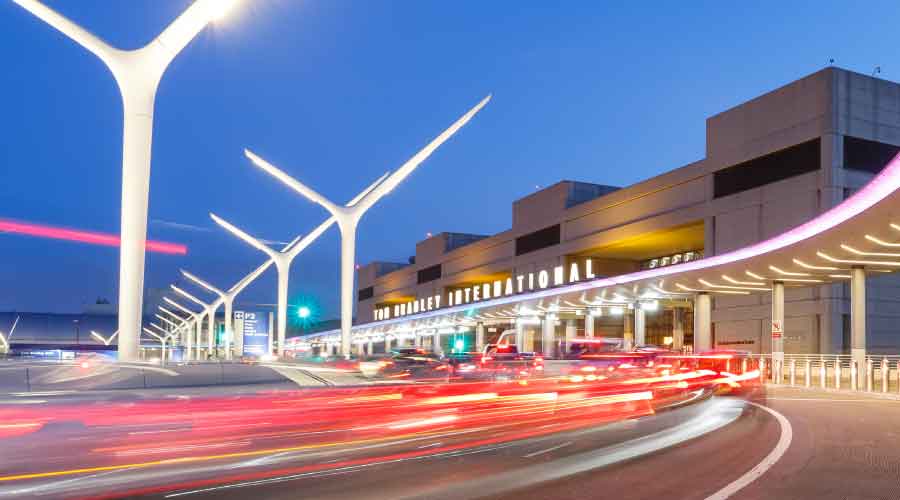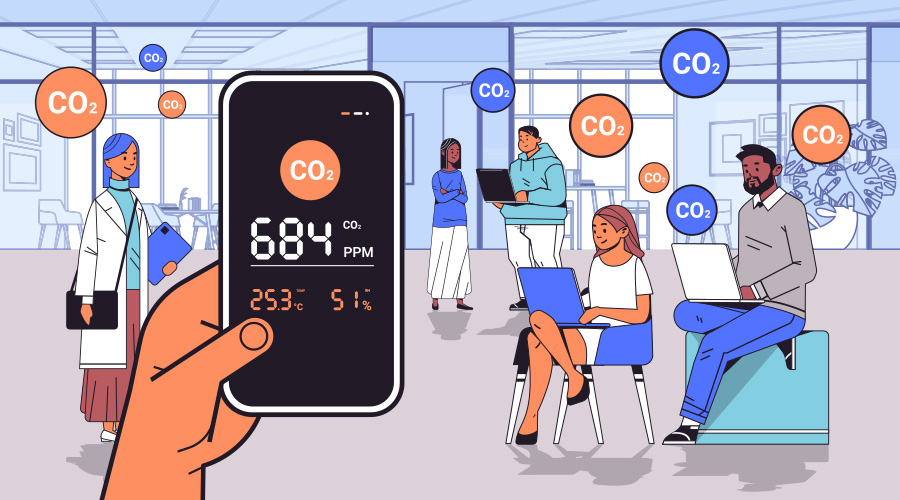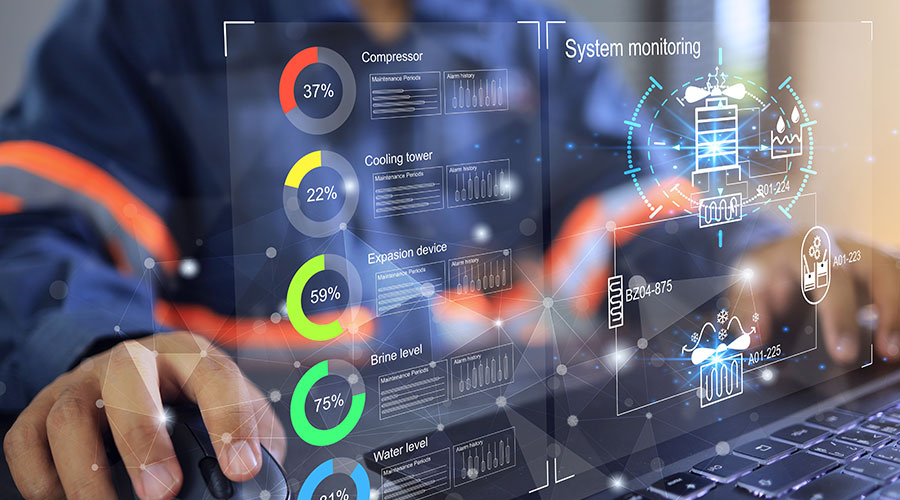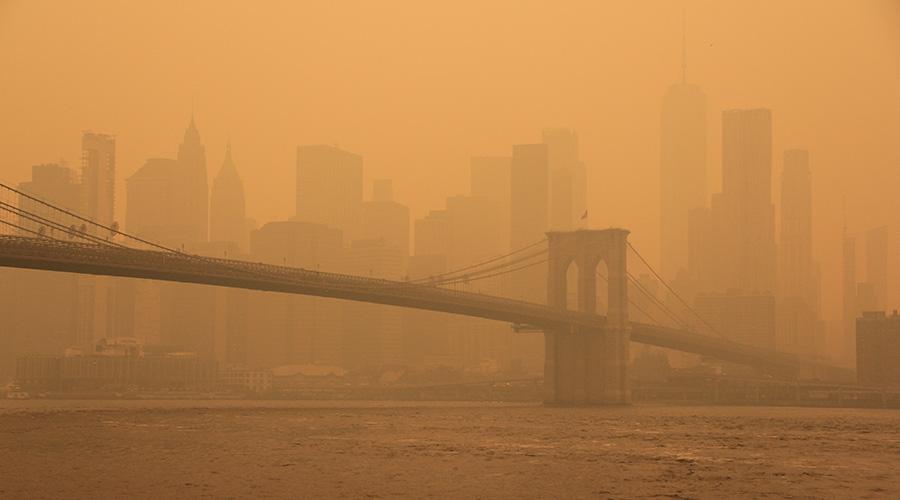LAX Upgrades Indoor Air Quality with Ultraviolet Light
Los Angeles International Airport's early buy-in on UV light pays IAQ, maintenance and health dividends.
By Dan Hounsell, Senior Editor
Few technologies have received as much attention and scrutiny during the COVID-19 pandemic as ultraviolet (UV) light. Many institutional and commercial facilities revisited nearly every aspect of their operations, scrambling to find ways to protect occupants, visitors and staff from the coronavirus and other threats to health.
At Los Angeles International Airport (LAX), the pandemic unfolded differently because of decisions that came years earlier.
“We were ahead of the curve here at LAX,” says Richard Yakel, air conditioning supervisor with the facilities and technical services division at Los Angeles World Airports. “Our facilities already had UV light on all of the air handlers in the terminals. Other airports are calling here asking, ‘What do you guys do? How are you getting product?’”
The organization’s jumpstart has paid dividends in terms of indoor air quality (IAQ), system maintenance and the health and safety of passengers and facility occupants.
Something in the air
The responsibility of ensuring the health of indoor environments and the safety of passengers and occupants at LAX is monumental. More than 48 million passengers moved through the airport in 2021, making it the fifth busiest U.S. airport, according to Airports Council International. And the challenge is growing.
“At LAX, we currently have nine terminals operating here with plans for the future to include two more terminals, Terminal Zero and Terminal Nine are scheduled, so that's possibly coming up," says Yakel, who has worked for the airport for 34 years. "Along with terminals, we also maintain some of our outlying buildings, such as a police station, a fire station, and general office area for airport staff covering several million total square feet."
IAQ problems in some of the airport’s facilities arose in 2009 among the airport’s more than 250 air handlers.
"We had a problem with mold and bacteria and smells and odors,” Yakel says. “That's when we started looking into UV light. We were trying different forms and methods of sanitization, but the mold of bacteria would always come back. Whether we cleaned it with bleach — we used condensate pan treatments — nothing seemed to last very long, so we started researching UV light.
“I reached out to UV Resources, and we ran a series of petri dish tests on air handlers and coils and determined we definitely had a mold and bacteria problem. We proceeded with sizing up our first air handler with the right amount of UV light and came up with a solution to get rid of the mold and bacteria.”
The upside of the airport’s UV light applications did not stop there.
“We also saw other benefits besides clean air — cleaner coils, and we had more efficiency of airflow across the coils,” Yakel says. “That’s what prompted us to start looking into a terminal-wide UV light installation.”
Yakel’s role in researching the potential impact of and benefits for the facilities involved seeing the technology in action.
"I went to a water treatment facility and saw how they used UV lights to treat water and saw it was working in the water,” he says. “I did a lot of research before making the decision, and I was happy I did.
“Our role was to research it and make sure that it was something that would benefit the airport, the travelling public and the tenants. And after looking into the technology and finding out more about it, we decided that's what we want to include in our yearly budget. My role was the research, the background, budgeting, the planning and scheduling of the installation in all the air handlers and the terminals."
The process soon resulted in the installation of UV light systems in air handlers throughout the airport’s facilities.
“We started phasing it, and we saw the benefits of UV,” Yakel says. “We said, ‘We need to go ahead and start installing these on all of our air handlers.’ So we started at Terminal Two and retrofitted all the air handlers there, and slowly as budget allowed, we started moving process to all the other terminals at the time.
“In the meantime, we added a UV specification to the airport's design construction handbook, so any future tenant improvements or capital projects with HVAC equipment purchased and installed at LAX would already have UV installed. We have retrofitted all of our older air handlers to use UV light. All of our new air handlers and fan coils that are being installed per the design construction handbook called for UV lights to be installed on all new equipment.”
The airport’s UV light applications also have included upper-room systems, which typically are installed near the ceiling in office areas, waiting rooms and break rooms and distribute UV light throughout the space without coming into direct contact with occupants.
"We have some upper air room UV light systems installed in Terminal One,” Yakel says. “We did a pilot program in a couple of restrooms there. We have some of the upper-room UV systems installed here in our maintenance office and a lot of our maintenance shops. We're looking into the possibility of adding more. We don't have any immediate plans to install more, but it's definitely something we were looking into on a case-by-case basis.”
Delivering benefits
After more than a decade, LAX’s UV light systems have performed as Yakel and his team intended.
“Once the UV lights are installed and up and running, it keeps the coils and drain pans really clean,” he says. “There's a lot less pressure washing the coils and cleaning and sanitizing the drain pans. Years ago, we’d see mold and bacteria and slime on the coils and the drain pan. We don't have that at all anymore. It's all been eliminated, so there is a lot less cleaning and sanitizing of the units since we have the UV lights.”
Beyond the impact on IAQ and HVAC system cleanliness, the UV light systems also have benefited the department’s maintenance workload.
“There is really very little maintenance involved other than changing the UV lamps,” Yakel says. “Occasionally, you're going to get a ballast that will fail. It’s kind of like fluorescent lights. You occasionally have to change a ballast, but for the most part, the maintenance is very minimal.
“We have our annual budget set aside for UV lamp replacements because with these lamps, we run them 24/7 here. Our equipment doesn't shut down at the airport. We have 24/7 operations. Typical UV lamp life is only around a year. We budget to replace UV lamps on an annual basis so we can keep our systems running at an optimum level, and I think that's key. You have to change out the UV lamps according to the hours of runtime, or they use a radiometer to measure the light output. If it's not where it needs to be, it's not performing service and killing bacteria and pathogens.”
Prepared for the pandemic
The COVID-19 pandemic that exploded in February and March 2020 caught many organizations and facilities flatfooted as managers scrambled to find and implement products, processes and technology that would protect occupants and visitors from the deadly illness. Yakel and his department were not among those who had to search for quick answers.
"We've already had this technology for years now, and we don't have to scramble,” he says. “We don't have to run out there to try to buy a product and get it installed. We already had it here in place. We just knew that having this product installed according to what we're reading was definitely providing some benefits to good indoor air quality, and we're happy with that.”
The UV light applications at LAX also have helped it earn two important accreditations, Yakel says. One is the GBAC Star Facility Accreditation from the Global Biorisk Advisory Council that acknowledges outbreak prevention, response and recovery in facilities.
The second accreditation is the ACI Airport Health Accreditation from the Airports Council International. The program provides airports with an assessment of how aligned their health measures are with the ACI Airport Operations and COVID-19: Business Recovery guidelines and ICAO Council Aviation Recovery Task Force recommendations, as well as with industry best practices.
Dan Hounsell is senior editor for the facilities market. He has more than 25 years of experience covering engineering, maintenance, and grounds management issues in institutional and commercial facilities.
Related Topics:












